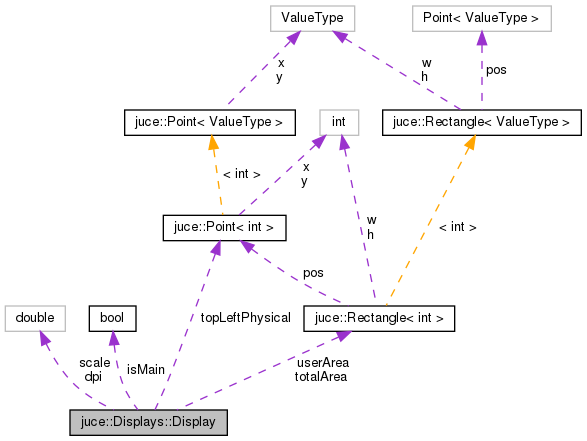Represents a connected display device. More...
#include <juce_Displays.h>

Public Attributes | |
| double | dpi |
| The DPI of the display. More... | |
| bool | isMain |
| This will be true if this is the user's main display device. More... | |
| double | scale |
| The scale factor of this display. More... | |
| Point< int > | topLeftPhysical |
| The top-left of this display in physical coordinates. More... | |
| Rectangle< int > | totalArea |
| The total area of this display in logical pixels including any OS-dependent objects like the taskbar, menu bar, etc. More... | |
| Rectangle< int > | userArea |
| The total area of this display in logical pixels which isn't covered by OS-dependent objects like the taskbar, menu bar, etc. More... | |
Represents a connected display device.
| double juce::Displays::Display::dpi |
The DPI of the display.
This is the number of physical pixels per inch. To get the number of logical pixels per inch, divide this by the Display::scale value.
| bool juce::Displays::Display::isMain |
This will be true if this is the user's main display device.
| double juce::Displays::Display::scale |
The scale factor of this display.
For higher-resolution displays, or displays with a user-defined scale factor set, this may be a value other than 1.0.
This value is used to convert between physical and logical pixels. For example, a Component with size 10x10 will use 20x20 physical pixels on a display with a scale factor of 2.0.
Referenced by juce::OpenGLContext::NativeContext::getWindowScaleFactor(), and juce::OpenGLContext::NativeContext::updateWindowPosition().
The top-left of this display in physical coordinates.
The total area of this display in logical pixels including any OS-dependent objects like the taskbar, menu bar, etc.
The total area of this display in logical pixels which isn't covered by OS-dependent objects like the taskbar, menu bar, etc.